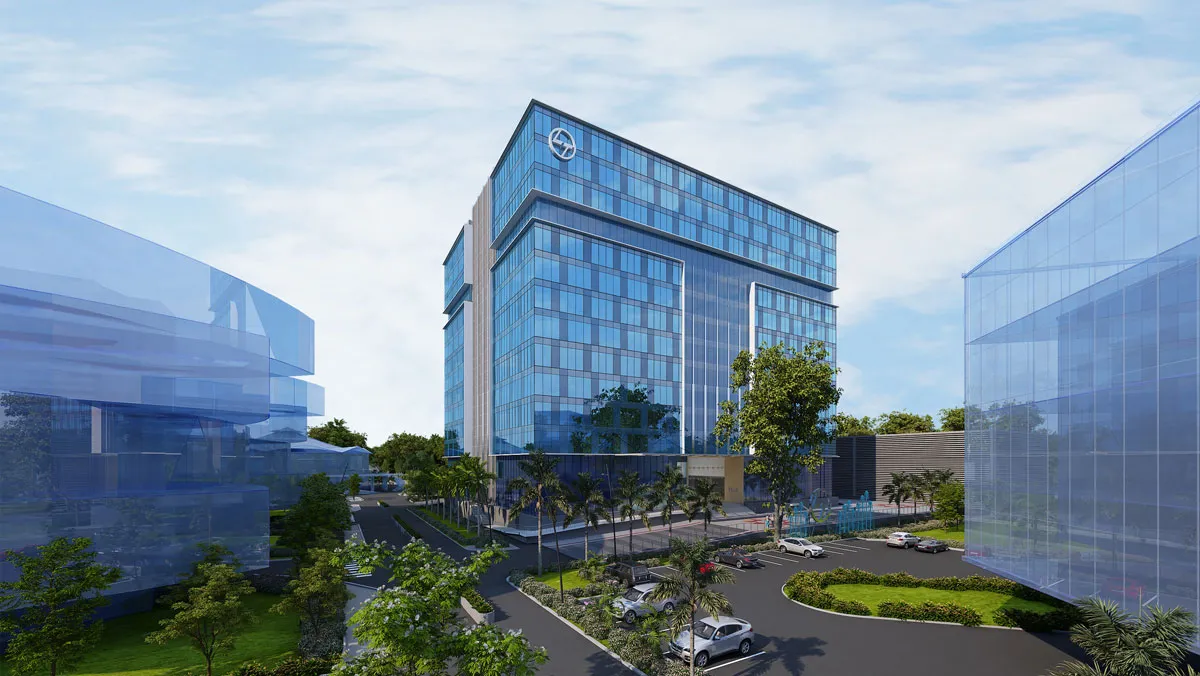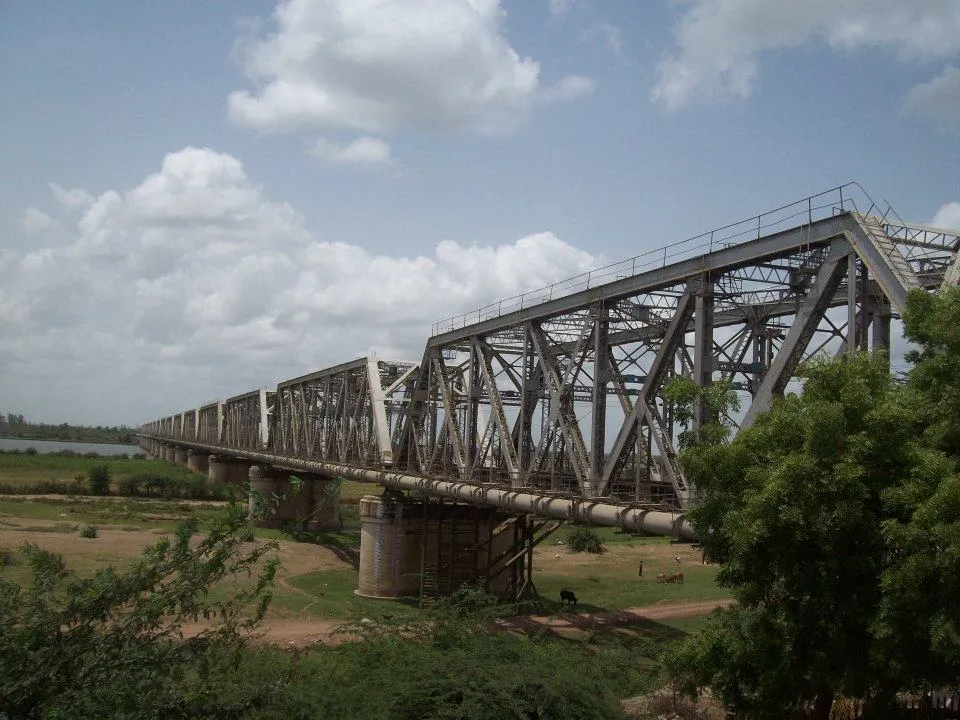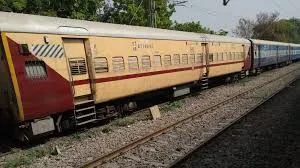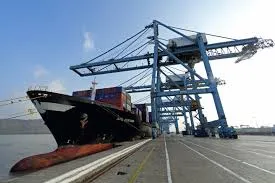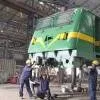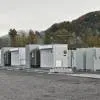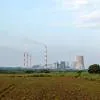The 88-storey Palais Royale in Mumbai. The 64-storey One Avighna Park in Mumbai. The 41-storey Wave One, Noida. All members of India’s small but growing number of skyscrapers, mostly in Mumbai, Bengaluru and Gurugram.Rapid urbanisation in the light of land constraints is making the question of ‘how tall’ increasingly crucial. “The ‘height of affordability’ is a critical consideration,” says Anuja Sawant, Principal, SSA, and Director, Council on Tall Buildings and Urban Habitat India Chapter.There is a strong case for building taller. But “the optimal height of a building is influenced by the ground space availability, target market, urban impact and evidence-based analysis,” says Sawant, all factors that developers must consider. Developers who decide to build taller face significant environmental, financial, logistical, regulatory and technological challenges. CW explores how these challenges are best navigated so that India’s skyline boasts iconic, inclusive, sustainable tall buildings.Cost impactThe real-estate value of tall buildings is largely influenced by their land value, says Sthaladipti Saha, Senior Vice President & Head – Buildings & Factories, L&T Construction, “while their construction cost is influenced by the complexity of structure and advanced safety and service systems, including vertical transportation systems and other features.”“The design of a tall building is perhaps the single most decisive factor influencing its total cost and, consequently, the price of every residential unit within it,” remarks Vinayak Bhosale, Chief Operating Officer, Rustomjee Group. As height increases, he explains, costs rise non-linearly. Structural systems become heavier, foundations deeper, cores larger and the demand on vertical transportation, façade performance and safety systems far more complex. Every extra floor amplifies the impact of wind and seismic forces, which in turn calls for larger structural members or higher-grade materials. Specialised consultants are required for wind, fire and performance studies; each introduce incremental costs that ultimately cascade down to the buyer.Virendra Vora, Promoter, Excel Infrastructure, reckons that “structural, material and service complexities, such as stronger foundations, advanced mechanical, electrical, plumbing (MEP) systems, high-speed elevators and stringent fire and safety norms can push up the per sq ft cost of a high-rise by 30-35 per cent as against a mid-rise building of similar specifications.”For example, in Mumbai, he cites the examples of the Imperial Towers at Tardeo and World Towers in Lower Parel. Their supertall designs required deep pile foundations, high-strength concrete, advanced wind-resistance systems and premium façade engineering, all of which add to per-unit costs. “Similar trends are seen globally, such as Marina Bay Residences in Singapore and One57 in New York, where vertical efficiency and premium skyline views command substantial cost uplift,” adds Vora.Design optimisationDevelopers charge ‘floor-rise charges’ for the higher floors in tall buildings for their better view, reduced access constraints and higher costs, which Dr Prashant Thakur, Executive Director & Head - Research, ANAROCK Group, says typically vary between Rs 20 and Rs 100 per sq ft extra (or even more). Still, it is important to reduce these costs as far as possible. As buildings are inherently technology-sensitive, they require the seamless integration of architectural and structural systems, explains Sawant, where the building’s shape plays a crucial role in optimising efficiency, while a well-designed core with strategically aligned vertical elements, such as elevators, staircases and service shafts ensures harmonious maintenance throughout the building’s lifecycle.“Every design element influences building performance, emphasising the need for holistic design; that is, design that interacts with and enhances the urban environment,” continues Sawant. Essentially, tall buildings must not be isolated from their surroundings; connectivity with urban elements contributes to ground-level efficiency.To make tall buildings more affordable, developers turn to design optimisation and coordination between structural, MEP, façade and vertical-transportation teams, early in the project lifecycle. “Performance-based structural design, supported by wind-tunnel studies and dynamic analysis, allows engineers to right-size structural members rather than overdesigning based on conservative code assumptions,” explains Bhosale. “This practice, now common internationally, can cut both material consumption and embodied carbon.”For the Island City Centre (ICC), One ICC and Two ICC, Bombay Realty (The Wadia Group) has collaborated with global structural consultants. In Rustomjee Crown in Prabhadevi and 180 Bayview in Matunga, core and service optimisation played a major role in controlling costs while BIM-based multidisciplinary coordination from the concept stage eliminated costly redesigns and site-level rework. “Bringing the contractor into the design phase (instead of post-design), by preventing redesign, delays and change orders, significantly reduces the cost,” says Abhijeet M Kulkarni, Director – Structures, Buro Happold, while underscoring the role of advanced building physics simulation and digital twins, essentially lifecycle carbon assessment to optimise structural design.Vora proposes integrating mixed-use elements and shared service cores such as common mechanical shafts and podium-level amenities to distribute costs more efficiently.Efficiencies driven by design optimisation impact the developer as well as the property owner. “A compact, efficiently planned core reduces the structural load and maximises the saleable area, gains that translate directly into reduced financing and overhead costs, both of which influence the final unit price,” says Bhosale. Essentially, “height need not be a cost burden; with intelligent design, it becomes an opportunity for efficiency.”Construction efficienciesConstruction costs are an outcome of construction timelines, materials and labour, cranage, accessibility and logistics, the use of specialist products, and idling or slowdown due to changes. However, structural and MEP modularity, repeat formwork, simple construction avoiding long spans and transfer beams, piled raft instead of pile foundations and simple façade systems can help optimise the speed and cost, according to Kulkarni. “In multi-tower townships, using the same grid system, formwork sizes and façade typologies across towers yields major economies of scale,” he says.“A repetitive and efficient floor plate ensures that formwork, reinforcement and façade modules can be standardised,” explains Bhosale. “Repetition allows economies of scale in fabrication and faster construction cycles, thereby reducing the cost per sq ft and shaving several percentage points off the overall material costs.”“Adopting optimised floor plate efficiency, modular construction techniques and Mivan or precast technology can help reduce structural redundancies, speed up construction, lower costs and improve precision,” says Vora. Further, smart scheduling and sequencing that allows for continuous pours for core walls, jump-form technology, auto-climbing systems and parallel MEP fit-out cycles also compress schedules by weeks/months, reducing both direct and overhead costs, adds Kulkarni.Congested urban sites restrict staging areas, making the vertical transportation of materials, equipment and personnel one of the most significant technical challenges. At Bombay Realty, vertical material movement is planned using high-capacity tower cranes and well-sequenced construction cycles.Subir Malhotra, Whole Time Director, Capacit’e Infraprojects, explains that achieving speed and safety at scale requires synchronised tower crane deployment, high-capacity pumping systems and digital workflow management. Advanced formwork systems, high-strength and temperature-controlled concrete and high-capacity vertical pumping are standard practices in Capacit’e projects. Equally critical is the choice of construction system, whether monolithic RCC, composite steel or modular prefabrication, he adds. This decision, made at the conceptual stage, can significantly influence project cost, timeline and sustainability outcomes. Reducing embodied carbonMaterial innovations are crucial to reduce both embodied carbon and overall cost. Bhosale points out the role of high-performance concrete, composite steel-concrete systems and new-generation reinforcement bars that allow for slimmer sections, locally produced low-carbon cement, self-consolidating concrete and supplementary cementitious materials such as fly ash and slag in significantly reducing the environmental impact of India’s skyline.At Bombay Realty, the use of fly ash, ground granulated blast furnace slag and recycled aggregates support a commitment to green building standards such as IGBC and LEED.“Lightweight internal partitions optimise the loads,” adds Kulkarni. However, this requires detailed consultation with all stakeholders, especially the end users in residential towers while it is being used in a number of hotel and commercial towers.Next frontierAnother major area of opportunity is the industrialisation of construction, or offsite manufacturing, a more sustainable approach to construction that Bhosale points out countries like Singapore, the UAE and parts of Europe have made remarkable progress in.“Precast cores, modern methods of construction (MMC), design for manufacture and assembly (DfMA), volumetric construction, bathroom pods and MEP racks reduce onsite waste and rework, besides speeding up construction at an improved quality,” says Kulkarni.Bringing such systems to scale in India would drastically cut construction waste, improve quality control, reduce onsite congestion, especially in dense urban contexts, and create safer, cleaner work environments, according to Bhosale.Mohit Ramsinghani, Head – Sales, Marketing and Customer Relations, Bombay Realty (The Wadia Group) supports the adoption of high-performance and green concrete technologies such as low-carbon cementitious materials, self-compacting concrete and geopolymer-based mixes to drastically reduce embodied carbon while improving durability. “Integrating advanced structural systems such as tuned mass dampers, outrigger systems and composite construction (steel-concrete hybrids) can enhance structural performance and material efficiency,” he adds.Malhotra believes that India today has access to virtually all global technologies required to construct super high-rise structures. The need of the hour is to responsibly integrate global technologies.“The opportunity lies in adapting and scaling global innovations to Indian conditions and constraints,” he says. “Instead of blindly importing innovation, India needs to embed global best practices into local ecosystems with a focus on lifecycle performance, resource optimisation and carbon responsibility.”Further, Malhotra says digital transformation, leveraging BIM, digital twins and data-driven construction management would usher in efficiency, accuracy and reduced rework. BIM and REVIT enable architects, engineers and contractors to collaborate more effectively and deliver complex projects on time and within budget, agrees Sawant.“Digitalisation through BIM Level 3 and digital-twin platforms enables true concurrent engineering, clash detection and the lifecycle monitoring of carbon and energy use,” explains Bhosale. Essentially, the aim should not only be to improve construction efficiency but also optimise building operation long after handover. Alongside BIM and digital twins, Ramsinghani cites IoT-based monitoring to enable optimisation in design, material usage and building operations for long-term sustainability.State incentivesThe challenge is that while tall building sustainability options exist (see box), they are typically not used, nor mandated as part of the larger effort to reduce the carbon footprint of cities, according to Gopal NP, Vice President - ESG, Advisory Services, Knight Frank India. He underscores the use of passive design features; low embodied carbon materials including lightweight composites to lower the energy consumed and extend the building’s longevity. Double-skin façades and low U-value glass significantly improve energy efficiency. Vertical greening, such as living walls and sky gardens, help combat the urban heat island effect and increase air quality. “Where they are used, energy-efficient materials, renewable energy systems, IoT-based systems, smart sensor installation, automation networks and other sustainability costs are typically being transferred to buyers, making sustainable high-rises more expensive,” he notes. Gopal points out that the EUs Smart Readiness Indicator framework, which involves equipping buildings to dynamically accommodate user demands and professionally modulate resource requirements for unparalleled sustainability and user satisfaction, could be considered to provide a framework aligned with India’s sustainable aspiration. Integrating this strategy would allow the country to augment the resource-efficient practices it has already embraced.“Access to sustainable technologies would improve when they are made locally, and prices fall,” he adds. But this, in turn, will only happen with the mass adoption of standardised IoT platforms and traditional smart building technologies. So, he advocates government incentives to improve their uptake. Only then will India’s rising skyline become greener and more sustainable.Cities like Singapore and Dubai have successfully controlled tall building costs through integrated design-build approaches and government incentives for green buildings, according to Saha. Similarly, in India, he says, “faster approvals through single-window clearance, standardised codes for tall structures and tax or premium rebates for sustainable designs can make high-rise housing more affordable without compromising quality or safety.”Single-window clearance would help overcome regulatory challenges and smooth the process of securing timely statutory clearances, while a review of codal provisions would plug existing deficiencies.Bhosale points out that India still depends largely on static code provisions, which tend to be conservative, whereas the tallest and most sustainable buildings around the world are designed through performance-based engineering and advanced wind-analysis techniques. “Introducing project-specific wind-tunnel testing and dynamic analysis would allow our structural systems to be more efficient, reducing the unnecessary use of materials and the carbon footprint that accompanies them,” he says.“We need better practice standards and quality and accuracy should be a higher priority than costs and time,” agrees Suresh Kumar, Principal & Vice President - Global Consulting, RWDI, based on his experience as a wind engineering consultant for the World One towers and the Chhatrapati Shivaji Airport Air Traffic Control Tower at Mumbai International Airport. “Our standards, in particular, IS 875 Part 3 Wind Loads, are very conservative (read ‘high’), which ruins the very foundation of sustainable design; that is, reducing the material consumed thereby the embodied carbon.”At the end of the day, the decision to build tall is a complex equation that involves balancing affordability, sustainability and urban responsibility, which Sawant says would be well guided by case studies to understand how varying building footprints can contribute to creating green spaces, foster community connections and effectively manage human density, allowing the development of strategies for designing tall buildings that are not only efficient but also contribute positively to their surroundings.Tall but not smartBuilding tall and sustainable is one goal. Add smartness to that, the building’s ability to track and control the use of energy, indoor air quality, light and occupant safety, while easing occupant’s use of the building, and crossing the goalpost becomes more challenging. Let alone the global stage, even within Asia, “India has yet to come to the level of smart tall buildings in Singapore or even Hong Kong,” points out Dr Prashant Thakur, Executive Director & Head - Research, ANAROCK Group.While India has examples of smart tall buildings, these are still in the early adoption phase, especially for tall high-rise skyscrapers with truly integrated smart infrastructure, according to Debanjan B, Managing Director, Design Services, Colliers India. Citing Imperial Towers in Mumbai as an example of an intelligent tall structure, Gopal NP, Vice President - ESG, Advisory Services, Knight Frank India, says high initial costs, limited automation vendors and data analytical expertise, especially concerning data security and privacy, hamper the development of smart skyscrapers in India. “Regulations and guidelines for smart construction are missing,” he adds. “This makes implementation complex, while the need to allocate resources to maintain and upgrade intelligent structures raises questions about their long-term sustainability.”Debanjan cites cost, integration complexity, skilled operations, the lack of standardisation and regulation and ROI concerns as key challenges while Dr Thakur calls out the high costs of smart systems such as IoT sensors, integrated BMS and smart façades, cybersecurity concerns and maintenance needs.Notwithstanding these challenges, Mohit Ramsinghani, Head - Sales, Marketing and Customer Relations, Bombay Realty (The Wadia Group), rightly says, “The focus must shift from merely building tall to building smart and sustainable.”Sustainable MEPConsidering that tall buildings are energy guzzlers, focusing on mechanical, electrical and plumbing (MEP) installations is vital to reduce operational costs and enhance sustainability. One of Mumbai’s tallest residential skyscrapers, Palais Royale, holds LEED Platinum certification. Integrated solar water heating, double-glazed facades and systems for harvesting rainwater reduce Palais Royale’s energy consumption by almost 45 per cent. Marathon Futurex, a commercial high rise in the city, is Gold pre-certified by the IGBC. It integrates a low emissivity façade, rainwater reuse and sky gardens that significantly lower the building’s requirements for cooling.Despite these examples, “India has very few energy-efficient and green-certified tall buildings that can be termed fully sustainable or net zero in the true sense,” says Rohit Shetty, Business Head, Energy Solutions’ GCEM business, Godrej Enterprises Group. “While LEED and IGBC-certified skyscrapers are setting benchmarks in efficiency, India is still evolving toward fully net-zero high-rise developments.”The gap, according to him , may be attributed “to limited roof space for solar energy, high cooling loads and complex building operations”.While Sthaladipti Saha, Senior Vice President & Head - Buildings & Factories, L&T Construction, proposes the use of bifacial solar panels on roofs, if this is insufficient, Abhijeet M Kulkarni, Director - Structures, Buro Happold, says, “Integrating renewable energy systems at height – such as façade-integrated solar panels and wind turbines for super-tall structures – can help offset operational energy requirements.”In glazed buildings, irrespective of whether the façade features integrated photovoltaics or not, automated façade shading reduces the operational energy demand, adds Kulkarni, while also endorsing design stage studies such as energy modelling, daylight analysis, and so on.A responsive façade with strategic offsets or contours significantly impacts energy-efficiency by minimising heat gain, while also controlling the cost of execution and later maintenance, observes Anuja Sawant, Principal, SSA, and Director, Council on Tall Buildings and Urban Habitat India Chapter. And Virendra Vora, Promoter, Excel Infrastructure, proposes the use of high-performance façades, double-skin curtain walls and adaptive shading systems to greatly improve energy-efficiency in India’s tropical climate.Coming to HVAC, it may be made efficient by shared district cooling/heating at the cluster scale. “In cluster-based developments, multiple towers share utilities and infrastructure for increased diversity to optimise power and water consumption,” explains Saha. “Smart chillers, smart AHUs and compact substations could contribute to HVAC efficiency.”Shetty underscores the need for “district cooling, thermal energy storage, chilled beam and displacement ventilation systems, along with smart HVAC controls, EC fans, variable-speed drives and AI-based building management systems. Modular and prefabricated MEP solutions can further improve efficiency and reduce onsite waste.”Elevators with regenerative drives, and rainwater harvesting and treated greywater circulation also play a role in ensuring MEP efficiency.The need of the hour: Vertical transportation design“We need the most optimal number of elevators, of optimal capacity, and optimal speed,” says Rajnish Ramu, Managing Director, Lerch Bates.As a building grows taller, Ramu points out there’s a norm that mandates one fire evacuation elevator and a service elevator at minimum. However, he believes mindsets must change so as to install a larger number of service facilities, “because studies show that the movement of amenities in terms of servants, maids and drivers far outnumbers the actual population of a building.”The challenge, according to Ramu, is that “the developer or procurement team focus the entire discussion on aesthetics, without getting to design parameters. But without design efficiency, you cannot have vertical transport efficiency.”How tall buildings can limit urban sprawlOne of the biggest challenges that our cities currently face is urban sprawl, says Sarfaraz Momin, Co-Founder, StudioPOD, and a specialist in urban design. “Urban sprawl becomes a challenge because as the city expands, the effort is to push all sorts of infrastructure further away, which puts a lot of pressure on city infrastructure.” In the case of water utility, it means that instead of water being pumped to a smaller area, it is actually pumped to a much larger, much spread out areas. Cities should be designed to be built densely in smaller areas, well designed, so that the best part of infrastructure in any city is concentrated in a small area, says Momin. “Super tall buildings come in the picture in that situation. We need to understand tall buildings in terms of density, not in terms of FSI or FAR.” Essentially, if you're keeping the FAR small and building tall, Momin says it’s the same thing. The density isn’t increased. “What we need to do for our cities to work really well is to design infrastructure networks in concentrated areas, where we can plan and think for 50 years, 100 years. When we do that, the planning authorities can designate areas for infrastructure for the next 50 years. Intense expensive infrastructure shouldn’t be spread everywhere, imagining that, tall buildings will come up everywhere.” As good city planners, Momin underscores the need to design cities to be dense. Practically, it is seen that the moment they try and increase the infrastructure capacity in the centre, the city moves out. A third ring road is planned, then a fourth ring road, a fifth ring road. How does a planner design a city around this challenge of an ever-expanding city? That is where the density and tall buildings come into picture. In India, density is especially important in view of the population. The moment sprawl happens, infrastructure will lack. According to Momin, that’s what developers are struggling currently with. They’re going into places that the city was never meant to be in, and expecting a lot of infrastructure to reach, but it takes a while to get there. It is happening in a haphazard manner, where the market is dictating a lot of things without a lot of planning coming up front.A project manager speaks: The three challenges of building tall“Design, construction and coordination is the first big challenge,” says Jairam Panch, COO, Turner International. “Logistics and construction sequencing is the second. The shortage of skilled manpower is another challenge.”Managing projects, working closely with contractors, the client and the other stakeholders necessitates proper coordinated drawings right from day one. Panch underscores the need for contractors to review these drawings so that they are in sync with the flow.While construction is fast-tracked in India, design, construction, and so many other things happen in parallel, Panch emphasises the need to focus on the core, and deploy technologies such as jump forms for that, and for which reason he advises many clients not to use tower cranes in the elevator shaft.Getting the deep foundation and basement out speedily is critical. The superstructure needs the right kind of hoist to support it, so by then, the curtain walls must be happening in tandem with the slab progress.Vertical logistics plays a big role, in tall building construction, and there Panch says, jump lifts, just-in-time deliveries help reduce cycle time. Panch spoke of fixing robots in tower cranes in the US, to measure the productivity of the picks, and using artificial intelligence in scheduling. He also stressed the need to adopt off-site fabrication, rebar cages, the MEP and HVAC systems, and in buildings less than 300 meters, a modular design that brings in standardisation.QuotesHeight need not be a cost burden; with intelligent design, it becomes an opportunity for efficiency. - Vinayak Bhosale, Chief Operating Officer, Rustomjee GroupIn multi-tower townships, using the same grid system, formwork sizes and façade typologies across towers yields major economies of scale. - Abhijeet M Kulkarni, Director - Structures, Buro HappoldSmart tall buildings in India are still in the early adoption phase. - Debanjan B, Managing Director, Design Services, Colliers IndiaWhile tall building sustainability options exist, they are typically not used, nor mandated as part of the larger effort to reduce the carbon footprint of cities. - Gopal NP, Vice President - ESG, Advisory Services, Knight Frank IndiaThe focus must shift from merely building tall to building smart and sustainable. - Mohit Ramsinghani, Head - Sales, Marketing and Customer Relations, Bombay Realty (The Wadia Group)Structural, material and service complexities can push up the per-sq-ft cost of a high-rise by 30-35 per cent as against a mid-rise building of similar specifications. - Virendra Vora, Promoter, Excel InfrastructureCities like Singapore and Dubai have successfully controlled costs through integrated design-build approaches and government incentives for green buildings. - Sthaladipti Saha, Senior Vice President & Head - Buildings & Factories, L&TConstructionInstead of blindly importing innovation, India needs to embed global best practices into local ecosystems. - Subir Malhotra, Whole Time Director, Capacit’e InfraprojectsFloor-rise charges for the higher floors in tall buildings typically vary between Rs 20 and Rs 100 per sq ft, or even more. - Dr Prashant Thakur, Executive Director & Head - Research, ANAROCK GroupOur standards, in particular, IS 875 Part 3 Wind Loads, are very conservative, which ruins the very foundation of sustainable design. - Suresh Kumar, Principal & Vice President - Global Consulting, RWDIThe decision to build tall is a complex equation that involves balancing affordability, sustainability and urban responsibility. - Anuja Sawant, Principal, SSA, and Director, Council on Tall Buildings and Urban Habitat India ChapterIndia has very few that can be termed fully sustainable or net zero in the true sense. - Rohit Shetty, Business Head, Energy Solutions’ GCEM business, Godrej Enterprises GroupQuick bytesTall buildings face rising cost pressuresDesign optimisation lowers structural complexityModular methods accelerate construction timelinesMaterial innovation cuts embodied carbon significantlyIncentives, digital tools enable sustainable skyscrapers
